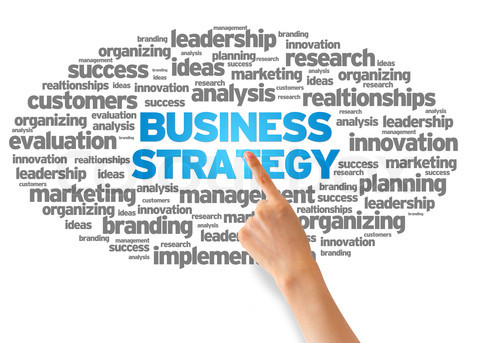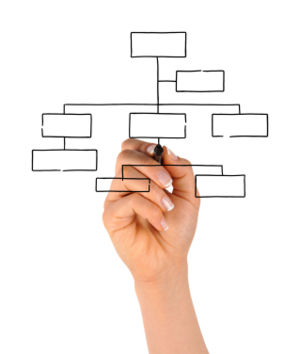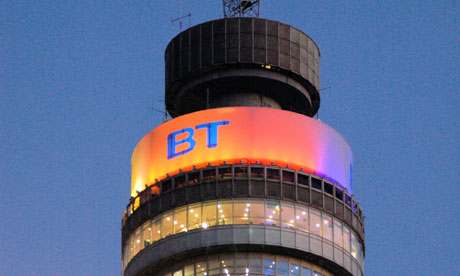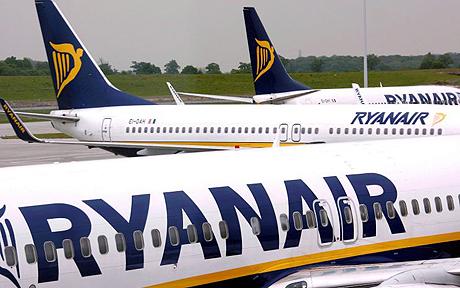Business Management Strategies
W H Smith is a company based in the United Kingdom and is one of the leading retail groups that specialize in selling stationary, magazines, books, entertainment products, and other impulse products. Its target market is travelers in places such as airports and train stations in addition to workplaces and hospitals. The company has grown over the years and has managed to open more branches all over Europe and internationally.
Porter’s Five Forces Analysis
The porter’s five forces analysis is mainly used to analyze the competition levels of an industry as well as the growth of strategic business developments. This analysis can be used to determine the overall profitability of a company, which marks a company’s success in its respective industry. The five forces are threat of new entrants, threat of substitute products or services, bargaining power of customers, bargaining power of suppliers, and the intensity of competitive rivalry (Jones & Hill, 2008, p. 45). Threat of new entrants refers to the introduction of new firms or companies into an industry that yields very high profits. Such markets attract new players into the industry that will in turn lead to lower profitability for the existing companies in that industry. Since new entrants will want to tap into the profits of the industry, they will tend to offer their products and services at a cheaper rate to attract more customers. Consequently, this will affect the whole industry, since the new competition will force all the companies in the industry to change their strategies in order to continue making profits (Jones & Hill, 2008, p.46). Therefore, these industries have to have certain barriers to ensure that few companies that enter are performing and the non-performing ones are unable to survive in the industry.
On the other hand, threat of substitute products or services refers to the different alternatives in the market apart from the commonly known products. Existence of such alternatives in a market is more likely to persuade customers to switch to such products or services with regard to their availability and suitability. Customer shift to a competitor’s products or services will mean that, a certain product will be less used at the expense of a new or better substitute (Jones & Hill, 2008, p. 46). The depreciation in the quality or the substandard nature of some products is the main reason for the switching to alternative products in an industry.

Apart from that, bargaining power of customers is also one of Porter’s five forces. This refers to the power that the customers have over a company on their products and services. This means that if a large group of buyers come together and demand a reduction in prices on particular products, then the company will be forced to make that decision due to customer pressure (Jones & Hill, 2008, p. 46). Such pressure is very high if there are many alternatives in the market in question, resulting in higher buyer power. Customer pressure increases the bargaining power of customers since they can put a company under immense pressure, when it comes to pricing of products.
Bargaining power of suppliers is another of the porter’s five forces. It involves supplier power, when there are few substitutes for raw materials, labor, or even components in a particular industry. Suppliers may possess power over a company if the resources they supply are unique and hard to get. This means that the company will have to heed to the demands of the supplier if they are to receive such resources to continue their production. Suppliers, hence, may be able to charge high prices for their products as well as choose which firms to work with due to supplier’s monopolistic nature (Jones & Hill, 2008, p. 48).
Lastly, intensity of competitive rivalry is the last of the Porter’s five forces. In any industry, the intensity of competition determines the success of the different companies in that particular industry. Firms, therefore, have to engage in practices that ensure that they have a competitive edge over their rivals (Jones & Hill, 2008, p. 49). This means that the industry will be more competitive, if more companies invest in advertising and other innovative ways, in order to attract the highest number of customers in a market, which has very many substitutes.
W H Smith’s Competitive Position
W H Smith is a competitive company, since it has diversified its retail stores and opened up various stores all over the country. In the travel sector for instance, the company was able to record high profits even though passenger numbers were small. This means that the stores in the travel sector of the company were able to sell more even in difficult economic conditions. The introduction of new businesses by the company ensured that the sales in travel grew significantly. Innovative strategies such as the rolling out of self-service tills in airside units led to increased customer numbers as well as reducing the management costs for the company. This made the company able to save on costs and use the funds to improve other facilities enabling increase in customer satisfaction.
With competition in the high street sales on the increase, the company has experienced a hard time in improving the sales in the market. It has, however, put in place measures to ensure that customers can have newer products in the market. These retailers in supermarkets and online platforms will ensure that the company is able to provide services to their customers with ease and at comfort, while undertaking their normal daily activities such as, browsing a computer at home, or doing shopping at a supermarket.
Difficulties in Utilizing the Porter’s Five Forces Analysis in Practice
The porter’s five forces analysis is a good tool that may be utilized by many companies, but may only be important for new companies planning to enter a new market. This analysis provides very few and weak links between the internal and external environments of a company, even though the two go hand in hand. This is because both environments play a role in the competitive forces of the company. Therefore, a company may be incapacitated in identifying the impacts that the relationship may have on the competition in the market. The strengths of certain forces are described by Porter’s model relatively, and may have different interpretations by different companies in the different industries (Meir, 2009, p. 36). Therefore, a company will require more analysis to identify any underlying conditions that may make either the buyer or supplier have more or less power.
Ansoff’s Growth Strategy Matrix
This strategy involves the marketing strategies that a company may use to determine both product and market growth. The four alternatives in marketing strategies include market penetration, product development, market development, and diversification. These strategies can be used to ensure that the company employs the right tactics to stay relevant in a competitive industry as well as maximize its profits (Maria, Grandinetti, & Bernardo, 2012, p. 72).
Firstly, market penetration involves methods that will enable a company to get its products into a market. It should be noted, that this is the lowest risk strategy. This may involve promotion of the product, creation of an extensive distribution process to reach a wider consumer area, and putting attractive pricing to lure more customers into purchasing the company’s products. Coming up with innovative ways of increasing the usage of the product will also, help a company improve its sales in an established market (Maria, Grandinetti, & Bernardo, 2012, p. 72).
Product development on the other hand involves the introduction of newer products or modifying the products to suit the customers’ customized needs. Modifying a product in the existing market by changing its outlook, improving both its quality and performance, will create a more appealing product in the market (Maria, Grandinetti, & Bernardo, 2012, p. 73). This will attract more customers into buying the product, therefore, increasing the company’s sales.
Apart from that, market development is another marketing strategy in the Ansoff matrix. This involves the company venturing into new markets to increase its client base. Opening up different branches at different locations will enable the company to reach new customers in areas that the product was not available. Such new markets require a proper strategy that will enable the product attract more people. Selling through the internet or mail order will make work easier for the company, since they will reach a vast number of customers who can access their products online (Maria, Grandinetti, & Bernardo, 2012, p.75).
Finally, the last strategy is diversification of both the market and the product. This means that the company will be producing a new product that will be sold to a totally new market. This requires a lot of research to ensure that the move leads to success. Since it involves two unknowns, the risks involved are very high and the company will have to assess these risks and understand the consequence of such a decision (Maria, Grandinetti, & Bernardo, 2012, p. 77). A company may decide to diversify into the same industry that is less risky or join another completely different industry that has higher risks. Therefore, the company should have a balance between the risk and the reward to ensure that the company gets the highest rewards from the diversification.
Analyzing W H Smith’s Business Objectives Using Ansoff’s Matrix
Travel in W H Smith focuses on delivering value to shareholders through growth in the different sectors it is involved in. This means that the company aims at market development by looking for new contracts and trialing new formats that will improve customer’s productivity. Apart from that, the company has incorporated a product development strategy, with the introduction of newer products that improve efficiency such as the self-service tills. Such new products increase both customer numbers and the average profits of the company.
The high street plan for the company plays a huge role in not only cutting its costs, but also maintaining its presence in core categories of the market. The company is able to develop the market by continued brand awareness and efficient advertising on television and other forms of media. Additionally, introduction of new products such as the Gadget shop products, which is part of the new gifting ranges, will increase the client base since it aims at reaching more customers.
Difficulties of Utilizing Ansoff’s Model in Practice
The Ansoff’s matrix can only be used sparingly because different companies interpret the matrix with respect to their circumstances. This means that it is impossible for it to be used as the basic standard tool for all companies analyzing their marketing strategies. It requires each company to analyze their products well before deciding on a strategy, in order for it to reduce risks that may lead to its demise. Apart from that, risk management is highly required for any decision in the company that involves the product or market. Since the matrix does not put into account the nature of a company, it is possible for a company to undertake a certain risk that may be disastrous hence the need for extensive research, which the matrix does not produce (Maria, Grandinetti, & Bernardo, 2012, p.79).
PESTEL Analysis for W H Smith
The PESTEL analysis aims at looking at external factors that a company is involved with when undergoing a market research or undertaking strategic analysis. It enables the company to understand its position in the market, its growth or decline and its overall potential. The PESTEL analysis involves different factors, which include political factors, economic factors, social factors, technological factors, environmental factors and legal factors. W H Smith has various external factors that affect its overall performance.
Firstly, political factors influence many businesses in a country. In the United Kingdom, the government allows proper competition by giving fair allocation of opportunities for companies that may wish to indulge in different businesses. W H Smith has benefited from this since it has been able to set up retail stores in different travel points such as airports and train stations without many barriers. The proper infrastructure such as hospitals and airports set up by the government has provided different opportunities for the company and enabled it to expand over various sectors.
Secondly, economic factors also have had an effect on W H Smith as a company. The low inflation rates and economic growth of the U.K. in general has enabled the company to thrive. Even though the economic times have had several changes over the year, the company was able to increase its operational profits by 8% within a year. This increase in the company’s profits under the given circumstances shows the company’s capabilities at such times which show the planning put in place and the strategies to ensure a balance in the economies of scale. The ability of the U.K. to attract visitors in major transport lines also played a huge role in the success of the company over the same period.
Thirdly, the social factors in the country also impacted the company. Since trends in social factors are able to affect demands for certain products, the company was able to adapt to new demands of the customers. New products and services were introduced to various parts of the area that were aimed at serving customers more efficient. Additionally, a growing number of travelers in the country provided the right platform for the company to develop over the years. W H Smith has been able to reach more people through its initiatives which have eventually benefited the company. Use of the Internet has increased exponentially and the company has taken advantage of this by sensitizing the society on the Internet. This has grown its market base significantly and increased sales.
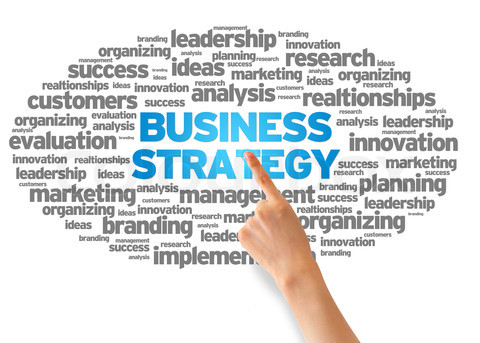
Moreover, technology also influenced the strategic decisions that the company had to undertake, with the company having to introduce automation in some parts of the retail stores such as the self-service tills. Apart from that, the introduction of e-commerce and mail order enabled the company to increase its online presence, since a huge number of people are always on the internet (Sekhar, 2009, p. 52).
Environmental factors that may affect the number of travelers visiting train stations and airports also affected the company at one point. Apart from that, the products that W H Smith sells to its customers are recyclable. This means that the products are environment friendly and does not in any way harm the environment. Such green products are approved by standardizing bodies hence are fit to be used by the different customers.
Lastly, legal factors are the final element in the PESTEL analysis that looks at the laws that govern the operation of companies. The laws that are in place enable W H Smith to operate within an acceptable range, since the company adheres to all the possible laws, which means that the company is able to monitor its costs, demand for the products they sell, and their overall operations.
Evaluation of W H Smith’s Current Position Using the SAF Model
W H Smith has developed and grown over the year and has been able to open up new branches in addition to the already existing 561 travel units and 612 high street stores. Through these various stores, it has made it possible to employ over 16000 employees who manage the running of these retail stores. Using the SAF model which consists of suitability, acceptability and feasibility we can evaluate the company’s current position.
Suitability in the company’s case can be seen with the strategies that it has put in place to address the different issues that the company in the industry. Furthermore, it has also begun e-commerce projects that will enable customers to see and order their products online and be able to purchase them from the comfort of their homes (Jones & Hill, 2008, p. 54). In addition, the mail order service it has begun will facilitate customers to place orders and then receive the products through the mail delivery process. All these are aimed at cementing the company’s position as a leader in this sector, and enabling it to gain access to more customers, therefore, increasing their market share in the U.K. and worldwide.
With regard to acceptability, the company has been able to manage their risks and returns in such a way that it can gain profits in the different ventures it has taken part in. W H Smith is in a position where it has an advantage over its competitors, since it has put its attention to growth drivers that will allow the expansion of the company. Diversification has also helped the retail stores to tap into new markets and gain a huge client base in this industry, with the development of more stores in both the travel units and the high street stores. All these factors have aided the company to develop significantly, and build its brand image, therefore, creating a huge force in this industry.
Lastly, feasibility in the company’s case refers to the resources that are required to implement the different objectives of the company. Through their development strategies the company is able to cope with the different challenges that it has faced in recent times. A significant number of problems affect the company such as, economic changes that affect the country, as well as competition in high street stores by other companies. The company has put in place measures to counter these problems by introducing innovative ways that aim at improving service delivery, efficiency, and sustainability in the company.
References
Jones, G., & Hill, C. (2008). Essentials of Strategic Management. Cengage Learning.
Maria, E. D., Grandinetti, R., & Bernardo, B. D. (2012). Exploring Knowledge-Intensive
Business Services: Knowledge Management Strategies. Palgrave Macmillan.
Meir, R. (2009). Knowledge Management Strategies for Business Development. IGI Global.

